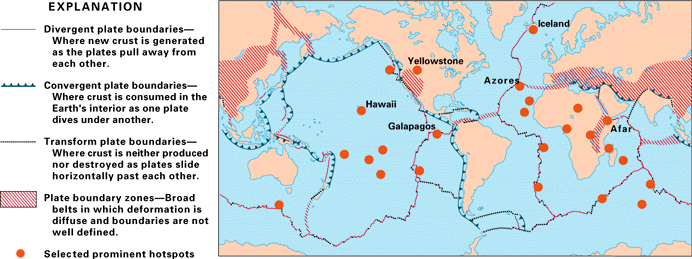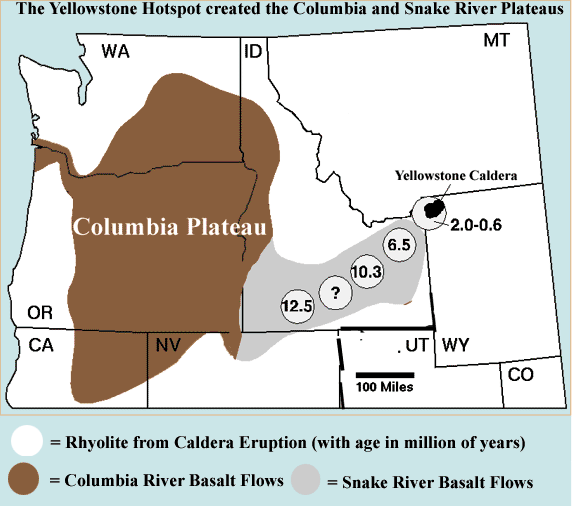
Hotspots are places on the earths surface where extremely high heat flow from below the lithosphere (below the tectonic plates) is affecting the overlying plates. The plates are literally being burned from below by the rising heat from the hotspot. Hotspots seem to either be stationary or to move at a different rate that the lithospheric plates above. Thus if a lithospheric plate is being melted by the hotspot a trail of heat damage (including volcanoes and volcanic islands) is left behind and sketches the path that the plate has been moving in relative to the fixed hotspot.
About twenty-five hotspots are known to exist today and are marked by excessively high heat flow and volcanism. They have scarred the plates that have moved over them and left long burn marks, volcanic islands (and seamounts), and volcanic ridges. The hotspots themselves reside at the end of the trails opposite to the direction that the plates are moving in.

Examples of hotspots today include the Hawaiian Islands and Emperor Seamonts (a continuation of the Hawaiian chain that has sunk
back beneath the waves) and Iceland that seems to be an area of anomalously high heat flow
along the Mid-Atlantic Ridge of the North Atlantic. Yellowstone National Park in Wyoming may sit
atop a hotspot called the Yellowstone Hotspot that is believed to have been responsible for the
huge basaltic lava fields of the Snake River Plain and Columbia River Plateau
(Yellowstone is at the northeast end of the Snake River Plain). The direction of the
trail makes sense if North America is truly moving west. The Yellowstone Hotspot is a really worry
in that it has already caused vast volcanic eruption in the past (called caldera eruptions) and
may explode again in the future. An explosive eruption of Yellowstone threatens our Midwest food
crops and poses other dangers that could seriously disrupt life see Supervolcanoes.
.

Click here to go back to Chapter 1